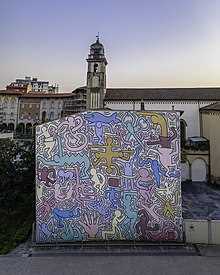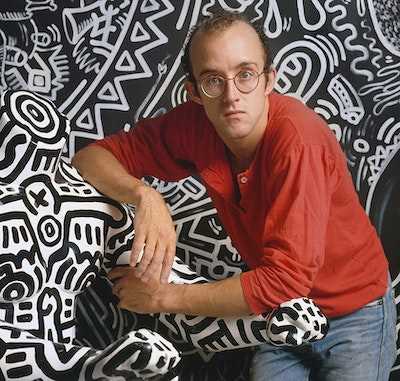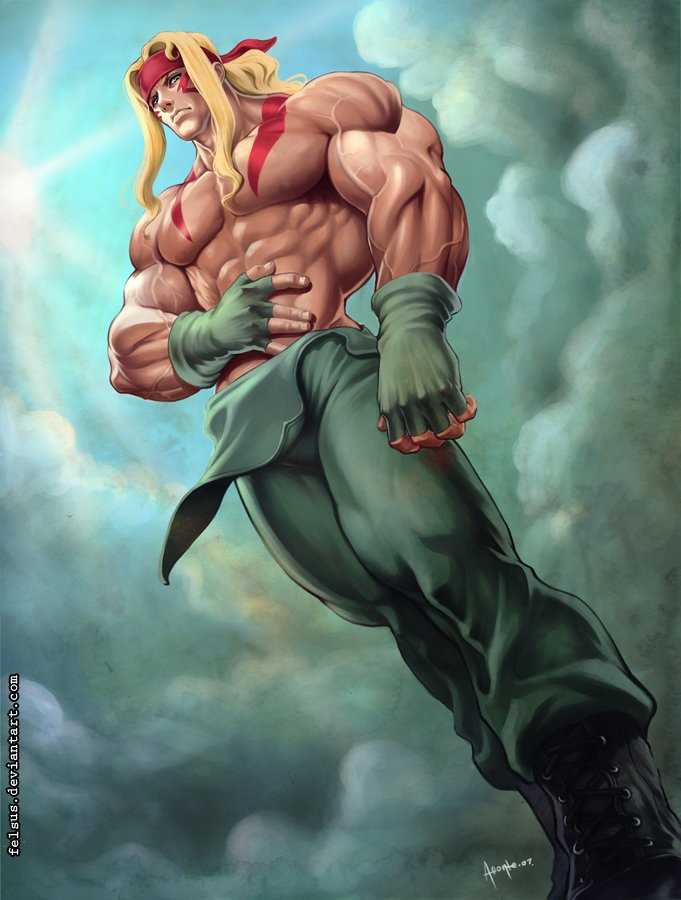Keith Haring is widely regarded as one of the most influential artists of the 20th century. His unique style and prolific career helped redefine the art world and solidify his place in pop culture history. Born in 1958, Haring’s passion for art was evident from a young age, and he quickly developed a distinctive visual language that would become his trademark.
With his bold lines, vivid colors, and playful imagery, Haring’s art captured the vitality and energy of New York City in the 1980s. His work often featured simple yet powerful symbols, such as dancing figures, barking dogs, and radiant hearts, which conveyed universal messages of love, unity, and humanity. Haring believed that art should be accessible to everyone, and he used public spaces, such as subway stations and city walls, as his canvas to reach a broader audience.
In addition to his outdoor murals, Haring also created artworks in various mediums, including painting, sculpture, and printmaking. His distinctive style and bold imagery made him an instantly recognizable figure in the art world, and he collaborated with numerous artists, musicians, and designers throughout his career. Haring’s work transcended traditional boundaries, merging art, activism, and popular culture. He tackled social and political issues, including AIDS awareness, racism, and nuclear disarmament, using his art as a powerful tool for social change.
The Rise of Keith Haring

Keith Haring, born on May 4, 1958, in Reading, Pennsylvania, rose to prominence as a leading figure in the street art scene of New York City in the 1980s. Haring’s rise to fame and influence can be attributed to his unique style and powerful message.
Initially, Haring gained recognition for his chalk drawings in the New York City subway stations. These drawings, characterized by their bold lines and vibrant colors, quickly caught the attention of passersby and became a visual symbol of the underground art movement.
As Haring’s work gained popularity, he began to expand his artistic reach beyond the subway stations. He started creating murals on blank walls and transformed them into colorful masterpieces. Haring’s artwork was not confined to traditional canvases; he believed in democratizing art and making it accessible to everyone.
Haring’s rise to fame was also fueled by his involvement in the downtown New York City art scene, which was known for its avant-garde and experimental nature. He collaborated with other artists, musicians, and performers, creating a unique community that embraced individuality and creativity.
Throughout his career, Haring used his art to address social and political issues, including AIDS awareness, nuclear disarmament, and apartheid. His iconic imagery, such as the radiant baby and the dancing figures, became powerful symbols of hope, love, and unity.
In addition to his street art, Haring also worked on various other mediums, including paintings, sculptures, and even fashion collaborations. His recognizable style and powerful message helped him gain international recognition and cement his status as a pioneer in pop culture street art.
Tragically, Haring’s life was cut short when he passed away from AIDS-related complications on February 16, 1990. However, his impact on the art world continues to resonate, and his legacy as an artist and activist remains strong.
The Impact of Keith Haring’s Art on the New York Street Scene

Keith Haring’s art had a profound impact on the New York street scene, transforming the city into a vibrant and dynamic art canvas. Through his iconic street art, Haring brought his bold and colorful imagery to the public, challenging traditional notions of art and empowering the everyday viewer.
One of the key impacts of Haring’s art was its ability to break down barriers between art and the public sphere. By creating art in the streets, Haring made his work accessible to all, regardless of their background or socioeconomic status. This democratization of art had a lasting effect on the art world, inspiring other artists to take their work to the streets and engage directly with the public.
Haring’s art also played a significant role in shaping the visual identity of New York City in the 1980s. His iconic symbols, such as the crawling baby and radiant hearts, became synonymous with the city and its vibrant culture. Haring’s artwork became part of the fabric of New York, adorning subway stations, buildings, and even fashion accessories.
Beyond its visual impact, Haring’s art had a powerful social and political message. Many of his works addressed social issues such as AIDS, racism, and the oppression of marginalized communities. Through his art, Haring sought to raise awareness and provoke conversations about these important topics. His bold and direct imagery served as a call to action, encouraging viewers to question the status quo and advocate for change.
Furthermore, Haring’s art inspired a new generation of artists and activists. His bold use of lines and colors, along with his powerful symbols, influenced various art movements and street artists around the world. Haring’s legacy can be seen in the work of artists such as Banksy, Shepard Fairey, and many others who continue to use art as a tool for social and political commentary.
Keith Haring’s Unique Style and Influences

Keith Haring is known for his unique style of street art that combines elements of graffiti, cartoon, and abstract art. His bold lines, vibrant colors, and simple shapes are instantly recognizable and have made him one of the most influential artists of his time.
Graffiti and Pop Art

Haring’s style was heavily influenced by the graffiti culture of New York City in the 1980s. Graffiti artists used the streets as their canvas, creating colorful artworks with spray paint. Haring embraced this style and brought it into galleries and museums, blurring the line between high and low art.
He was also inspired by pop art, a movement that emerged in the 1950s and 1960s. Pop art celebrated the everyday objects and imagery of popular culture, such as advertisements, comic books, and celebrities. Haring incorporated these elements into his work, using bright colors and bold lines to create energetic and playful compositions.
Social and Political Messages

While Haring’s art may appear simple and playful at first glance, it often carries deeper social and political messages. He used his art as a way to address important issues such as AIDS, racism, and nuclear disarmament. His iconic symbols, such as the radiant baby and the barking dog, became powerful symbols of hope, love, and activism.
Through his art, Haring aimed to break down barriers and make art accessible to all. He believed that art had the power to transform society and bring about positive change. Today, his work continues to inspire and resonate with people around the world.
| Famous Works | Year |
|---|---|
| Radiant Child | 1982 |
| Untitled (Three Dancing Figures) | 1989 |
| Crack is Wack | 1986 |
The Symbolism and Meaning Behind Keith Haring’s Art

Keith Haring, a renowned American artist, is known for his distinct style and iconic symbols. His art was not only visually striking but also carried deeper meanings and messages. Haring’s work often tackled social and political issues, making him a pioneer in using street art as a medium for activism.
One of the most recognizable symbols in Haring’s art is the figure of a crawling baby. This symbol represents innocence and vulnerability, reminding viewers of our shared humanity. Haring believed in the power of art to bring people together and promote compassion and empathy.
Another prevalent symbol in Haring’s work is the radiant heart. This symbol represents love, joy, and compassion. Haring believed that love was a universal language that could transcend barriers and create positive change in the world. By incorporating the radiant heart in his art, Haring aimed to spread love and inspire hope.
Haring’s art also featured bold lines and energetic movement, which conveyed a sense of dynamism and action. These elements represented Haring’s belief in the power of art to provoke thought and drive societal change. Haring saw art as a tool for activism and used his work to address issues such as AIDS awareness, nuclear disarmament, and racial inequality.
| Symbol | Meaning |
|---|---|
| Crawling baby | Innocence and vulnerability |
| Radiant heart | Love, joy, and compassion |
Overall, Keith Haring’s art is not just visually captivating but also carries a powerful message. The symbols he used in his work have become iconic representations of important values such as love, compassion, and human rights. Haring’s influence on pop culture and street art is undeniable, and his legacy continues to inspire artists and activists today.
Keith Haring’s Legacy in the World of Street Art

Keith Haring was an iconic figure in the world of street art, leaving behind a lasting legacy that continues to inspire artists today. His unique style and recognizable symbols made him a pioneer in pop culture and brought street art to the masses.
One of the most significant contributions Keith Haring made to street art was his ability to bridge the gap between high art and popular culture. Haring’s bold and vibrant images could be found not only on the streets of New York City but also in galleries and museums around the world. He believed that art should be accessible to everyone, and his work served as a powerful statement against the elitism often associated with the art world.
Another lasting legacy of Haring is his use of symbols and icons in his artwork. Haring’s simple yet powerful imagery, such as crawling babies, barking dogs, and radiant hearts, became instantly recognizable and synonymous with his name. These symbols served as a visual language that transcended barriers of language and culture, allowing his messages of love, unity, and activism to reach a global audience.
Keith Haring’s legacy also extends beyond his artwork. He was a vocal advocate for social justice and used his platform to raise awareness about issues such as AIDS, apartheid, and nuclear disarmament. Haring’s activism and dedication to making a positive impact on society continue to inspire artists who use their work as a tool for social change.
Today, Keith Haring’s influence can be seen in the work of countless street artists worldwide. His use of public spaces and unconventional materials paved the way for artists to transform the urban landscape into a canvas for self-expression. Haring’s legacy serves as a reminder that art has the power to transcend boundaries and make a lasting impact on the world.
The Connection Between Keith Haring and Pop Culture

Keith Haring was not only an artist but also a pioneer in pop culture street art. His iconic images and symbols have become ingrained in popular culture and continue to resonate with people today. Haring’s work was deeply influenced by the social and cultural issues of his time, and he used art as a means of communication and activism.
One of the main connections between Haring and pop culture is the way he used his art to address important social issues of the 1980s, such as AIDS awareness, drug abuse, and the fight against racism. Haring’s bold and vibrant style resonated with a wide audience and made his messages accessible to everyone. His art became a powerful tool for raising awareness and promoting social change.
Another connection between Haring and pop culture is his use of symbols and imagery. Haring’s iconic figures, such as the radiant baby, the dancing figures, and the barking dog, have become instantly recognizable and are often used in pop culture references and merchandise. Haring’s imagery has been used in various forms, from clothing and accessories to album covers and graffiti art.
Haring’s influence on popular culture can also be seen in the way his art has been adapted and incorporated into various mediums. His work has been featured in museums and galleries around the world, but it can also be found in public spaces, such as murals and street art. Haring’s art has been embraced by the masses and has become a symbol of freedom of expression and individuality.
Overall, Keith Haring’s connection to pop culture is multi-faceted. His art not only reflects the social and cultural issues of his time but also continues to inspire and influence popular culture today. Haring’s ability to bridge the gap between the art world and the mainstream has made him an enduring figure in the world of pop culture street art.
The Enduring Popularity of Keith Haring’s Art

Keith Haring’s artwork continues to captivate audiences worldwide, even decades after his death. His iconic style, characterized by bold lines and vibrant colors, has become synonymous with the spirit of New York City in the 1980s.
Haring’s accessible and energetic art resonates with people of all ages and backgrounds. His iconic figures, such as the dancing figures, radiant babies, and barking dogs, are instantly recognizable and have become cultural icons themselves.
Impact on Pop Culture

Haring’s art has had a significant impact on pop culture. His imagery has been widely reproduced on various merchandise, including t-shirts, posters, and accessories. His simple yet powerful symbols have become a part of popular culture, transcending the art world and reaching a wider audience.
Additionally, Haring’s activism and his dedication to social issues have cemented his status as an influential figure. He used his art as a platform to address important topics such as AIDS awareness, anti-apartheid activism, and environmental concerns. His commitment to social justice resonates with many people, making his art not just visually appealing but also impactful and meaningful.
Legacy and Influence

Keith Haring’s influence can still be seen in contemporary art and street culture. His use of public spaces as canvases for his art has inspired many street artists who continue to use public spaces to express themselves. Haring’s boldness and willingness to defy artistic norms have also influenced a new generation of artists who embrace street art and pop culture as legitimate forms of artistic expression.
Furthermore, his legacy lives on through the Keith Haring Foundation, which supports arts education and HIV/AIDS research. The foundation continues to preserve and promote his art, ensuring that his message and vision are remembered and celebrated.
Overall, Keith Haring’s art remains popular and influential, serving as a testament to his talent and vision. His ability to create visually striking and socially relevant artwork has made him a pioneer in the world of pop culture street art.
Exploring the Global Reach of Keith Haring’s Street Art

Keith Haring’s iconic street art has transcended borders and has left a lasting impact on the global art scene. His bold and vibrant imagery, filled with dancing figures, barking dogs, and other symbolic elements, can be found in cities across the world.
From New York City to Tokyo, Paris to Berlin, Haring’s distinct style has captured the attention of people from all walks of life. His murals can be seen on the sides of buildings, in subway stations, and even on street signs. This accessibility and visibility have allowed his art to reach a diverse audience and break down barriers to traditional art consumption.
One key element of Haring’s work is its universal appeal. His art is easily recognizable and speaks to people of different cultures and backgrounds. Haring’s use of simple lines and bold colors makes his work accessible and relatable to a wide range of viewers, regardless of their artistic background or knowledge.
Haring’s art also carries a strong message of social activism and human rights. Many of his murals tackle issues such as AIDS awareness, apartheid, and anti-nuclear movements. By using street art as a medium, Haring was able to spread his messages and engage with the public in a way that traditional art forms often cannot.
Today, Haring’s impact can be seen in the numerous exhibitions, artworks, and merchandise that bear his unique style. His legacy as a pioneer in pop culture street art continues to inspire and influence artists around the world, ensuring that his global reach will endure for generations to come.
| City | Country | Notable Haring Artwork |
|---|---|---|
| New York City | United States | The Bowery Wall mural |
| Tokyo | Japan | “Tower” mural at Shibuya Station |
| Paris | France | Le Centquatre mural |
| Berlin | Germany | The Berlin Wall mural |

I am a mural enthusiast and a fervent admirer of street art. Rather than creating murals myself, I am passionate about collecting them. My love for street art knows no bounds. I am dedicated to curating and cherishing these artworks that grace the streets. My collection stands as a testament to my profound appreciation for this form of artistic expression.
read about me



